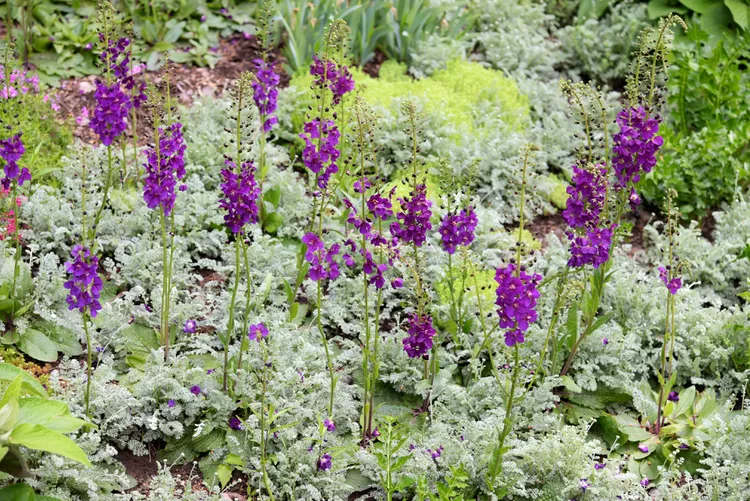
Description
Mullein (Verbascum thapsus) grows in neglected pastures and meadows, vacant lots, roadside ditches, forest borders, fence rows, and industrial locations. Plants grow low to the ground and produce rosettes of hairy leaves during their first year of life. Each soft leaf is 4–12 inches long and 1–5 inches wide, with a gray-green color that ranges from oblong to lanceolate. This biennial herbaceous plant has a deep taproot and is short-lived perennial. The plant must be exposed to cold temperatures in order to undergo vernalization, which is when it flowers in the spring of its second year.
Habitat
With the exception of the far north, mullein is ubiquitous and widely distributed throughout Britain and Ireland. This wildflower can also be found in northern Africa, some parts of Asia, and much of continental Europe, particularly the Mediterranean region, where it flourishes despite the long, dry summers.
Uses
Mullein is a common medicinal plant that grows along roadsides, in meadows, and on pastures. It has been used to treat a variety of conditions, including asthma, inflammatory disorders, lung issues, diarrhea, and migraine headaches.

Varieties
Here are a few types of mullein to consider:
“Olympic (or Greek) mullein” (V. olympicum): Two to five feet tall, with white or yellow flowers. “Moth mullein” (V. blattaria): Bright yellow flowers on five-foot-tall spreading stalks
The violet mullein, or V. phoeniceum: A short-lived cultivar with violet or dark purple flowers that grows to a compact 3 feet tall
“V. chaixii,” or “nettle-leaf mullein“: a little cultivar that reaches a height of two to three feet, with long-lasting purple centers in white blossoms.
Plant Care
- Light
Mullein prefers full sun to grow. To shield them from the wind, plant them beside walls or big trees in a dry, warm area.
- Soil
Mullein can be grown in almost any kind of soil, however dry, slightly alkaline soil is ideal. Additionally, the plant may adapt to calcareous, poor soil. It can spread swiftly and form dense patches even more quickly than some native plants because of its extreme adaptability.
- Water
If you are growing mullein from seed, keep the soil moist. Though it doesn’t require much moisture, once the plant begins to flower, give it more frequent watering.
- Temperature and Humidity
A hardy plant that can tolerate extremes at both ends of the temperature range is mullein. It can withstand temperatures as low as -25 degrees Fahrenheit, and if watered periodically during a scorching summer without rain, it will flourish. It doesn’t care too much about the humidity.
- Fertilizer
Applying a low release 10-10-10 fertilizer will help mullein develop more quickly and yield more flowers. Refer to the product label for directions on how much to use.
Table





